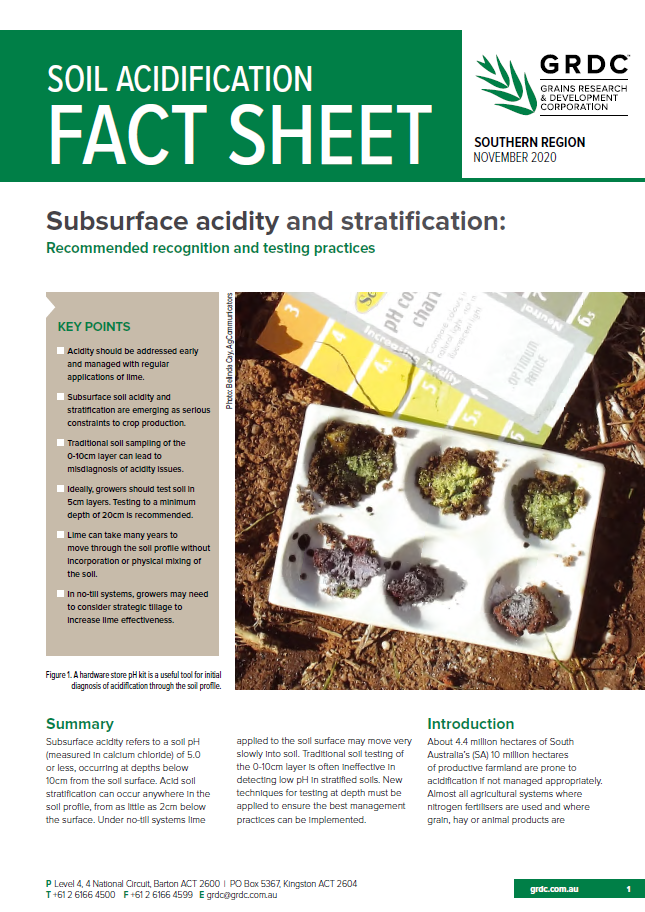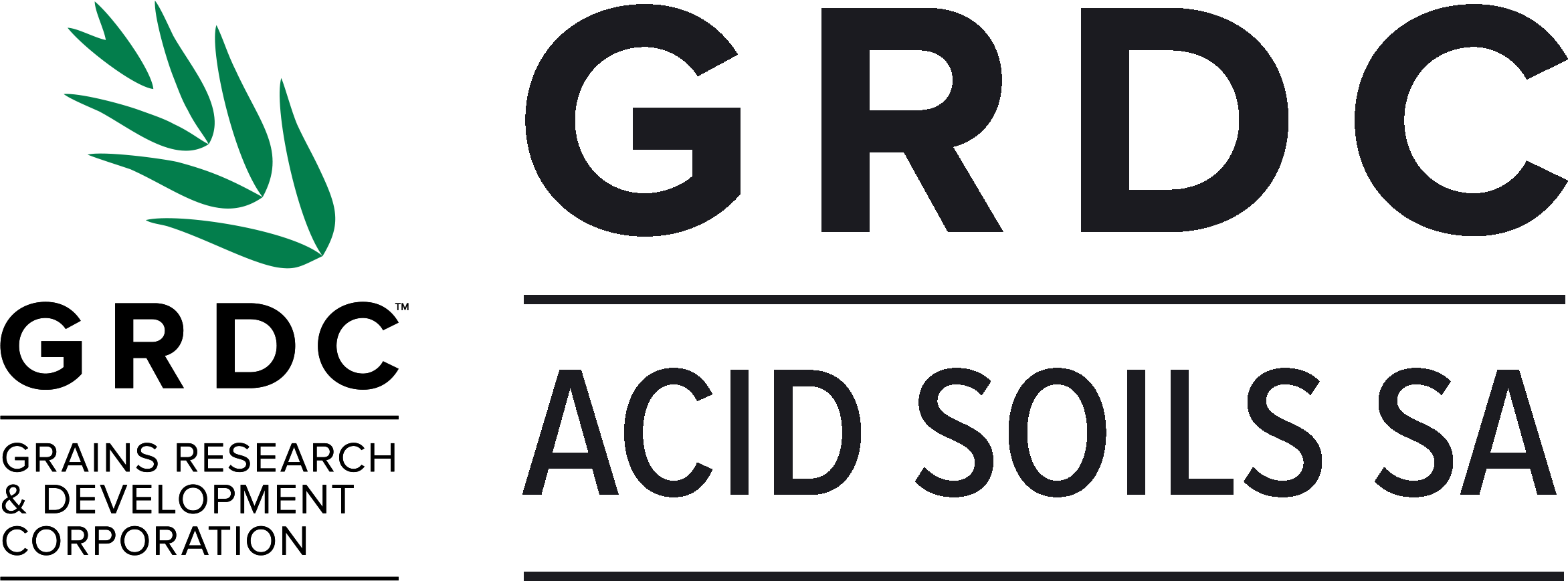New knowledge and practices to address topsoil and subsurface acidity under minimum tillage cropping systems of South Australia
Investment
GRDC Code: UOA1905-015RTX
New knowledge and practices to address topsoil and subsurface acidity under minimum tillage cropping systems of South Australia
Soil acidity has been a constraint to crop production in Australia for many decades, especially on sandy soils where pH drops rapidly and in the higher rainfall cropping areas. The investment instigated new long-term field trials and glasshouse experiments, revisit existing lime trials, and conduct extension and communication activities to understand the extent of spatial variability in soil acidification across a range of soils and farming systems in SA, including the impact of seeding system and fertiliser applications. The aim was to identify, develop and validate novel acidity management practices to overcome the impacts of subsoil acidity The key findings from the field trials were the largest lime responses were seen with lentils, beans and vetch, however responses were found in barley and wheat at some sites. Deep incorporation with ripping, spading, inclusion plates were the best treatments where subsoil acidity was present. Percentage relative yield by soil pH relationship are being developed for SA soils and crops and relationships between pH rise and lime treatments are being compared with rule of thumb approximations. Lime application consistently increased molybdenum content and reduced manganese in plant tissue analysis. Manure application improved legume nodulation and growth and soil pH but biochar treatments were not beneficial. Investigations of older trial sites have highlighted good lime movement over time from very high rates of lime or immediately following deep incorporation. A PhD student generated good results examining the use of infrared scanners to measure lime movement and soil buffering capacity. There is continued strong demand for information on acidity and its management. The new web site (acidsoilssa.com.au) has received positive comments from several sources. During the reporting period direct contact was made with around over 350 farmers and agribusiness personnel who attended one of the nineteen extension events. Crop update papers/presentations and Groundcover articles were produced.
- Project start date:
- 01/05/2019
- Project end date:
- 30/06/2022
- Crop type:
-
- All Crops
- Organisation
- The University of Adelaide
- Region:
- South
- Project status
-
Completed
GRDC News
Update papers
- 22 Feb 2022, Detection of lime in acidic soils using mid infrared spectroscopy - GRDC
- 28 Jul 2021, The potential to increase the crop productivity by treating hostile subsoils - GRDC
- 08 Feb 2021, Early results from trials addressing topsoil and subsurface acidity in South Australia - GRDC
- 19 Aug 2020, Assessment and treatment of subsurface acidity - GRDC
- 10 Feb 2020, Subsurface acidity – how far has the research advanced? - GRDC
Resources

Soil acidification fact sheet - GRDC
01 Mar 2021
Subsurface acidity refers to a soil pH (measured in calcium chloride) of 5.0 or less, occurring at depths below 10cm from the soil surface.
External resources

GRDC Acid Soils SA
Providing growers and advisers with information, resources and tools to improve the management of surface and subsurface soil acidity in South Australia.
